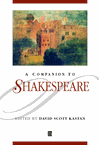The Craft of Printing (1600)
Summary
In 1594 John Danter published Titus Andronicus, the first Shakespeare play to reach print. The title page of the edition provides succinctly salient marketing details. It defines the play's genre ( the most lamentable Roman Tragedie of Titus Andronicus'); it advertises the play's recent stage history ( As it was Plaide by the Right Honorable the Earle of Darbie, Earl of Pembrooke, and Earle of Sussex their Seruants'); it names the printer and publisher (who, in this instance, are one and the same: John Danter); and it indicates the wholesaler: Edward White & Thomas Millington, at the little North doore of Paules at the signe of the Gunne'.1 St Paul's churchyard (and precincts) was the centre of the bookselling trade, both wholesale and retail. Cathedral premises were administrative centres and, consequently, had been associated throughout Europe with bookbinding and bookselling since before the era of the printed book: the keeping of registers, ledgers, records, etc. required parchment, paper, inks and bindings. In addition, the scribes, clerks and clergy involved in this clerical work constituted a large literate population for enterprising stationers (Blayney 1990: 18). Then, as now, businesses thrived in colonies of competitors, the geographical concentration of specialists drawing custom to the area. In London, as elsewhere in Europe, print culture simply eXpanded the cathedral precinct as a centre of the booktrade.



